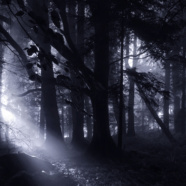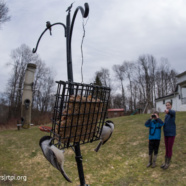RTPI to Host “Illuminating the Dark Side of Nature” Book Club
Program Theme: Illuminating the Dark Side of Nature It’s easy to find beauty in the natural world. Literature is filled with descriptions of breathtaking landscapes, magnificent creatures, and meaningful experiences in the great outdoors. Yet, nature also has its dark places – filled with curiosities that we often fear. Participants in this new Reading and Discussion series will explore some of the strange and mysterious corners of the natural world – as they venture through contemporary pieces of literature- into places they may otherwise be reluctant to probe. Program...
Read MoreCitizen Science Opportunity: Protect Our Hemlock Trees
Hemlock Woolly Adelgid is an aphid-like insect, originating from Asia that feeds off of the food storage cells below the needles of an Eastern Hemlock tree and hides itself under white woolly masses for protection. Within only a matter of 4-10 years an individual tree can succumb to an HWA infestation if left unnoticed. This deadly bug has been progressively moving closer to our area as it has spread throughout much of the eastern United States, leaving massive stands of hemlocks dead in their wake. Early detection of this particular pest is crucial as the spread of HWA can be managed....
Read More120th Annual Christmas Bird Count is December 14th-15th!
The Christmas Bird Count (CBC) is the longest-running citizen science project in the world. In its 120th year now, the National Audubon Society is starting this year’s CBC season, organizing counts in hundreds of locations. Data gathered by volunteers has historically been critical to our understanding of how bird populations change over time. In this day and age, with bird populations declining sometimes precipitously, it is critically important that many people participate and help us count the birds that are present on a CBC count day. This is an early-winter bird census that shows what...
Read MoreChiropterophily: The incredible pollination services that bats provide.
Recently, many have become aware of the issues that our pollinating insects face. Insects have been in a general decline for some time now, which is worrisome as they help prop up the food chains that support just about everything else on the planet. There are over 400 species of native bees just in New York State alone, each with an important role in the food web. Other critters – flies, beetles, butterflies, birds, etc. are important pollinators as well. A critical pollinator that often gets overlooked is the majestic and glorious bat. While all of the bat species in NY and around 70%...
Read MoreVigilant volunteers on Connecticut beaches result in successful nesting season for threatened shorebirds.
Season recap reveals new details about where American Oystercatchers migrate, and historically low numbers for Least Terns. November 19, 2019– Thanks to the efforts of almost 100 volunteers on Connecticut’s beaches, two of the state’s most vulnerable shorebirds had highly successful breeding seasons in 2019, reflecting a generally safer shoreline locally for federally and state-threatened birds. The Audubon Alliance for Coastal Waterbirds announced that the 57 pairs of Piping Plovers that nested in the state fledged 1.72 chicks per pair, higher than the regional goal of 1.5 fledglings...
Read More








